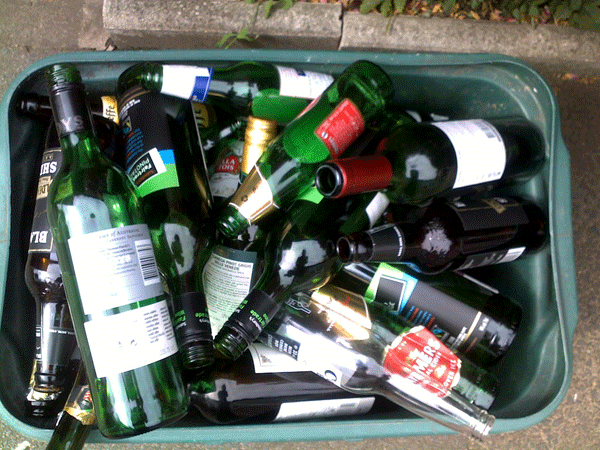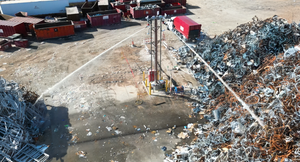Rethinking the Bottle Bill in the Context of Universal Curbside Recycling
New York State’s current proposal aims to further expand the beverage containers included within the state’s deposit redemption system.
New York State (NYS) is currently contemplating a further expansion to its bottle bill. The details of the proposed expansion are presently unknown, except for what was included in a recent press release from the governor’s office. The governor’s press release indicates that the expansion will include adding noncarbonated beverages, such as teas, fruit and sports drinks, to the state’s deposit system. These are beverages bottled typically in aluminum, PET, HDPE and, to a much lesser degree, glass bottles.
Combined with the changes that were made to the NYS bottle bill in 2010, as part of the then Bigger Better Bottle legislation, which added water bottles to the deposit system, this proposed change, if instituted, will further erode the economic viability of curbside recycling. Additional carbonated and noncarbonated beverages packaged in glass—such as beer and wine—have not been targeted as part of this current proposal.
The ostensible reason provided for this expansion is the current crisis precipitated by China’s closure of its doors to U.S. post-consumer recyclables and the feedback the state has received from recyclers statewide about dwindling markets for recyclables. Since most of the feedback at stakeholder forums statewide focused almost entirely upon the challenges presented to curbside recycling programs and those that operate them by the revenue-draining presence of glass, it is somewhat puzzling that the resulting proposed solution is silent about glass.
A Note About Glass
At the inception of curbside recycling, glass food and beverage containers were included as a portion of the designated recyclables that make up the commingled metal, glass and plastic stream. One reason that glass items were targeted is because of their ubiquity at the time within the post-consumer waste stream. The fact that glass items weigh substantially more than aluminum cans and plastic bottles and jugs cannot be underestimated as an additional reason for their designation by state and municipal programs. There is considerable political pressure for municipalities to increase annually their local diversion rates for recyclables—diversion rates based upon the weight of recyclables redirected or diverted from the waste stream for the purpose of recycling.

Finally, the bottling industry played a significant role as well, encouraging in the 1980s the formation of recycling programs that included glass as a designated recyclable as a way of avoiding other post-consumer proposed solutions for bottles perceived to be far more onerous and costly for their industry to adopt. The bottling industry funded local environmental organizations to advocate on behalf of and implement local generator source separation programs, including glass separation by color. These industry-funded, local advocate-operated programs were later incorporated into the municipally-run curbside recycling programs as recycling expanded to the municipal level through this successful lobbying effort.
What about the marketability of post-consumer glass? The reality is that from the earliest beginnings of recycling as a municipal program, glass has been a challenge for program operators to find market outlets. Even glass generated as a post-consumer, color-sorted commodity from small-scale community drop-off programs and via redemption systems has had marginal value for the last 30-plus years. When collected on a large scale, commingled with other food and beverage containers to minimize collection costs (the highest cost associated with recycling programs), the value of glass diminishes further as a mixed cullet containing various hard-to-remove contaminates. Essentially, glass is a drain on the potential revenues generated by every ton of recyclables collected. Since glass can make up anywhere from 25 to 35 percent of the weight of each ton of the metal, glass and plastics collected by a municipality, it is a substantial drain.
Bottle Bills Versus Curbside Recycling
Though many deny that bottle bills and curbside recycling compete for the same commodities, facts to the contrary are undeniable. When comparing the value of a commingled ton of metal, glass and plastic recyclables collected in a non-bottle bill state with that of a bottle bill state, the difference is clear. The non-bottle bill state will have a greater percentage of aluminum in its mix than that of a bottle bill state.
Aluminum is one of the highest value commodities collected curbside. The percentage difference between the amount of aluminum found in the two states results in significantly more revenues being produced by the non-bottle bill state’s ton of recyclables. Some of the other commodities typically targeted both by a bottle bill and curbside recycling, such as containers made of PET and HDPE, also will be present in greater percentage in a non-bottle bill state, thereby also contributing to increased value of the metal, glass and plastics tons collected by the non-bottle bill state’s curbside programs. These are revenues that help to support the collection and processing of curbside recyclables.
When NYS added water bottles to the then bottle bill as part of its Bigger Better Bottle Bill expansion in 2010, the loss of PET was apparent to materials recovery facility (MRF) operators statewide, as well as the resulting loss in revenues.
Advocates for the bottle bill argue that the redemption or return rate for bottle bill material exceeds that of curbside recycling for the same beverage containers—a fact that, I believe, cannot be denied. However, a fact most advocates are unwilling to acknowledge regarding bottle bills is that the success of a bottle bill depends to a large extent upon post-consumer scavenging and redemption rather than redemption by the beverage container’s original purchaser.
Bottle bills, in essence, place a bounty upon the head of beverage containers. For many consumers, the bounty is insufficient to motivate them to redeem their original purchases post-consumption. Instead of redeeming the containers, consumers either place the items out for curbside recycling or simply throw out the items. Scavengers, poachers or entrepreneurs, whichever terminology you prefer, fill the void in the redemption process. In fact, if not for the convenience provided by municipal curbside recycling, which provides a readily available collection schedule per neighborhood and set out procedures that scavengers can follow, the redemption rate statewide would be substantially lower. This is not even counting the reduction set out in urban, high-density areas where building support staff regularly deny the municipal recycling truck and scavengers, as well the opportunity to pick up redeemable recyclables, by never setting them out and redeeming the items themselves.
In summary, bottle bills target many of the same recyclable commodities that form the backbone of municipal curbside programs, commodities, which, when sold by curbside operators, offset the net cost of a recycling program. To the extent that bottle bills are successful, curbside recycling suffers. When accounting for both the redemption by the original purchaser and the supplemental impact that scavenging has upon what is left at the curb for municipal recycling programs, the overall impact is significant. Expanding a bottle bill to target more and more beverage containers composed of the same commodities currently making up the major revenues generated by curbside recycling programs and used to offset operating costs will only further exacerbate the fiscal constraints being experienced.
The current proposal for further expansion of the bottle bill does not address the challenges expressed by program operators statewide with regard to glass. Instead, it targets primarily the high-value commodity items already described, which are typically composed of PET, HDPE and aluminum; post-consumer commodities that produce a substantial amount of the revenues received by recycling processors, commodities that mean the difference between financial success and failure.
While it is accurate that recycling markets have constricted precipitously once China began to finetune the quality criteria it applied to what the United States was exporting as post-consumer-processed recyclables, a solution based upon further expansion of the current Bigger Better Bottle Bill to target more of the commodities recycling programs and MRF operators count on is not prudent or meant to result in further supporting the success of municipal recycling programs. Rather, the current crisis should be looked at as an opportunity to rethink the logic of operating two collection systems that target virtually the same commodities, thereby creating a situation where the success of one guarantees the diminished success and possible failure of the other.
Rather than maintaining the existing bottle bill until its evolving expansion brings about the demise of curbside recycling, it may be time to question whether or not the bottle bill in its current form is necessary in the presence of universal curbside recycling and whether better alternatives like an advanced disposal fee on containers—set to encourage the use by manufacturers of truly recyclable packaging and discourage the use of packaging that is unrecyclable—might be a far better solution. This is a solution that would likely be welcomed by consumers, beverage distributors, storeowners and recyclers statewide. Especially if the funds generated were allocated annually for the support of municipal recycling programs statewide based upon recycling tons collected and processed.
Robert Lange was the prime architect of New York City’s recycling program and was director of the City of New York Department of Sanitation’s recycling program for 20 years. Prior to leaving city service, Lange was responsible for the Office of Beneficial Reuse Planning, Infrastructure Development & Management, within the Bureau of Solid Waste Management of the Department of Sanitation.
About the Author
You May Also Like


.png?width=300&auto=webp&quality=80&disable=upscale)